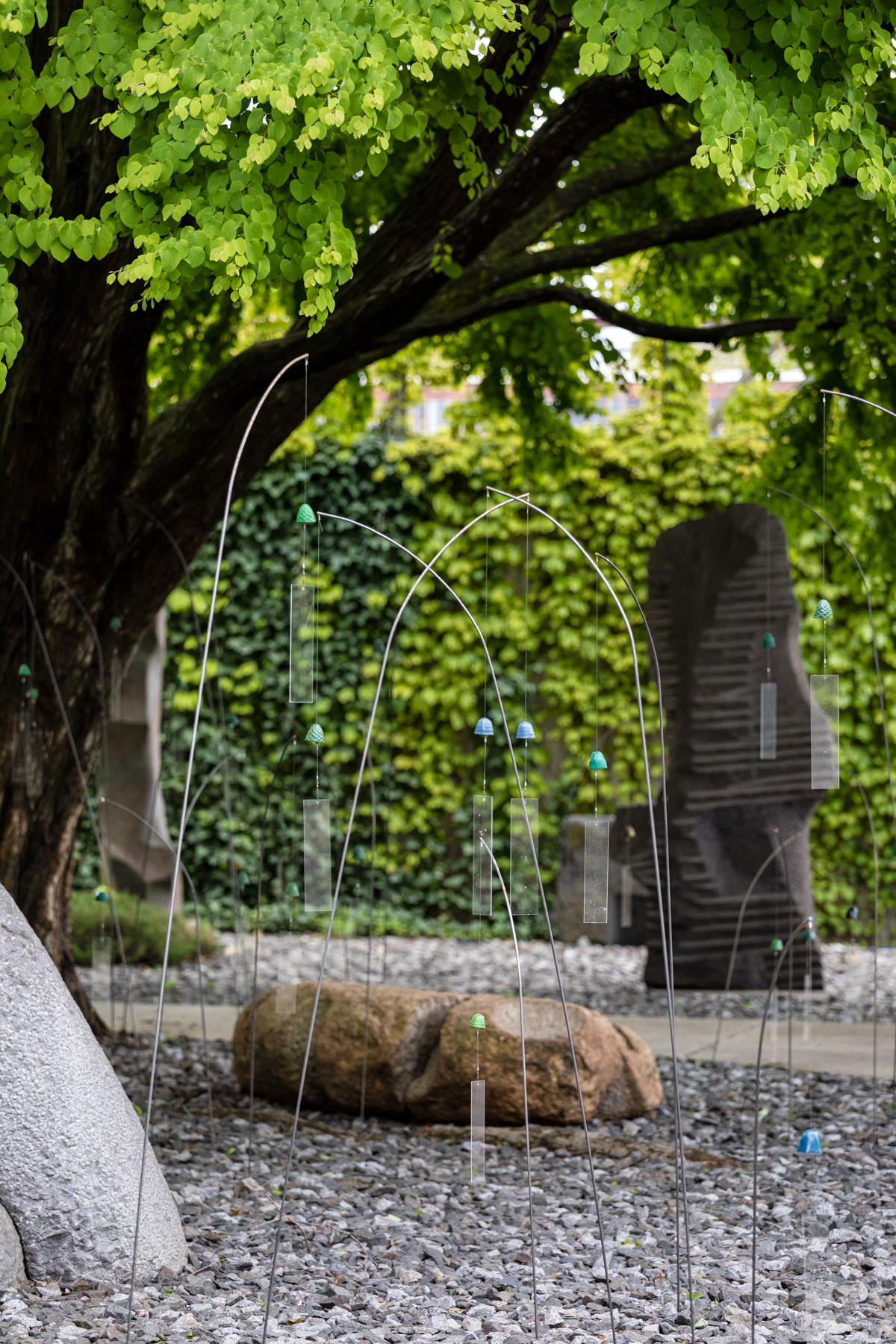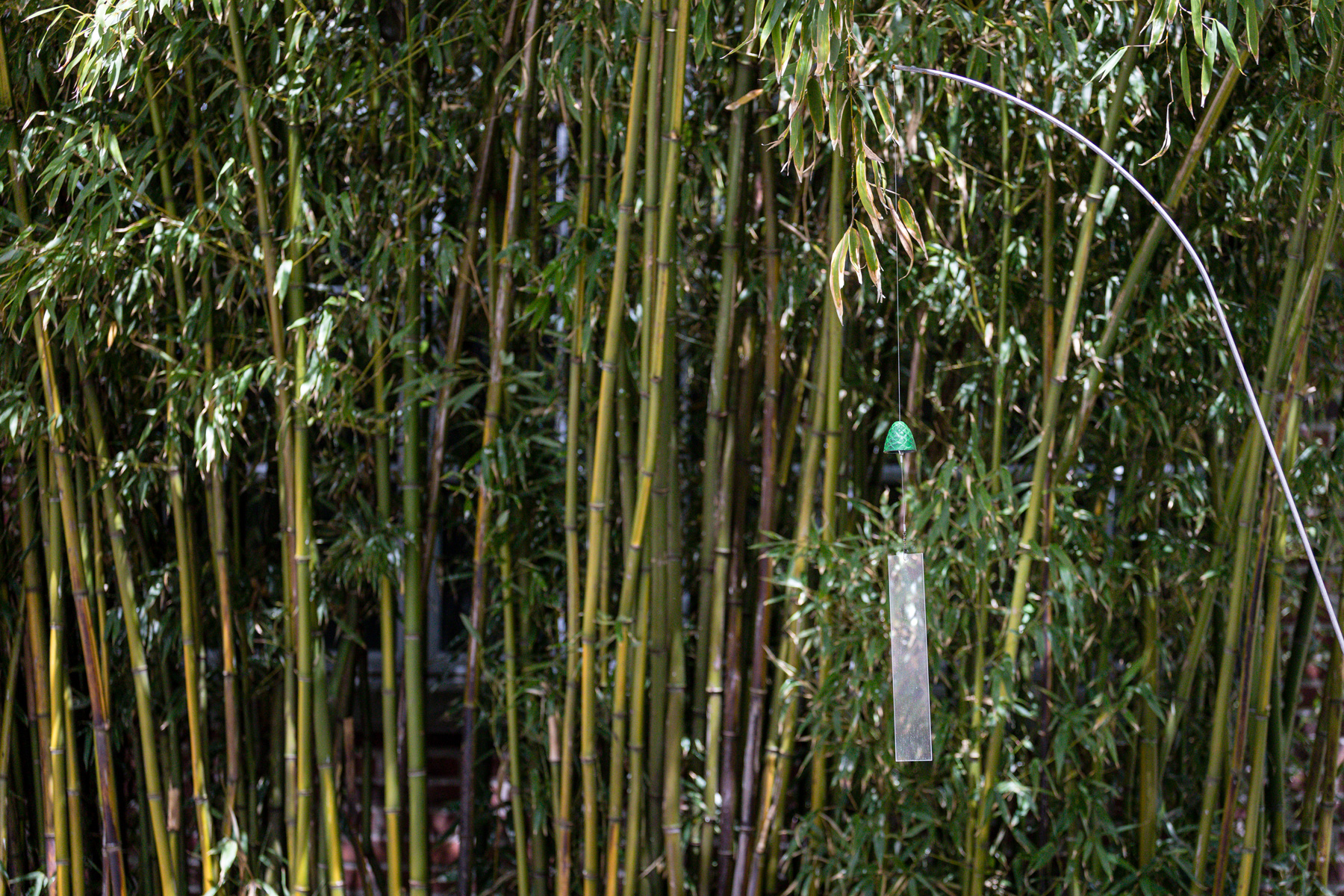Christian Boltanski (1944–2021) passed away on July 14. We were honored to have his ‘Animitas’ here in Noguchi’s garden and grieve for those who knew and loved him.
From May 5 to September 5, 2021, Christian Boltanski’s Animitas, a sound work consisting of 180 small bronze bells on steel stems, fills The Noguchi Museum’s garden with a “music of lost souls.” Boltanski’s extended video Animitas, La Forêt des Murmures (2016), which documents a permanent version of the work on the island of Teshima in Japan, is also on view.












